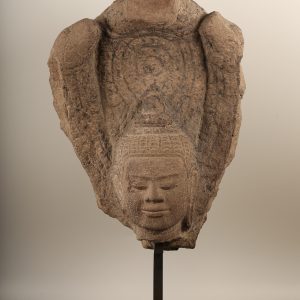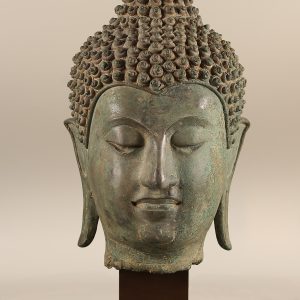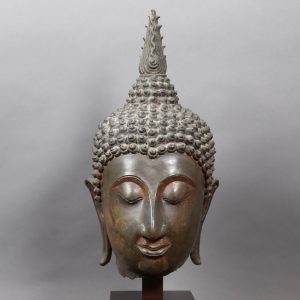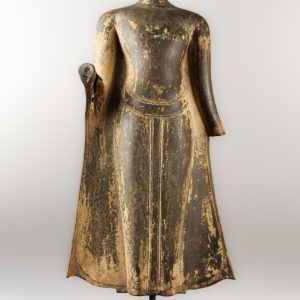
Lying Buddha
Bronze
Thailand, Chiang Saen
15th century
L. 62 cm
Description
In Thailand, the Buddhism of the Dvâravatî schools spread to the north and was gradually transformed, partly under the influence of the Khmers and partly under that of the people of Siam, who followed certain texts belonging to the Hînayâna doctrines. This transformation also manifested itself in the art: the Buddha’s heads became longer, their noses curved and their attitudes very flexible, almost fluid. Numerous schools were created, and bronze art flourished, decorating temples all over the country. This bronze from Chiang Saen is a perfect example.
This Buddha is in the Parinirvana position. Lying on his right side, his right hand supports his head, while his left rests on his left hip. He is wearing a sanghati on a long dhoti. His serene face is typical of Sukhothai art: arched eyebrows and full lips, hair in tight spiral curls covering the usnisa, topped with a cintamani. There is, however, a fuller face with fuller cheeks and neck, not typical of the Sukhothai style.
This is one of the Buddha’s four major poses, representing the last moment of his life. It is often depicted in images from India and South-East Asia.
The Reclining Buddha of Parinirvana symbolises the final stage of Sakyamuni’s life journey. This bronze embodies a profound sense of tranquillity, symbolising liberation from the cycle of birth and death.
Provenance : Swiss collection, 1980




